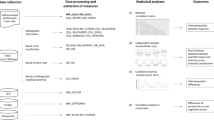Abstract
The paper discusses the role of scientometric indicators in peer-review selection of research project proposals. An ex post facto evaluation was made of three calls for research project proposals in Slovenia: 2003 with a peer review system designed in a way that conflict of interest was not avoided effectively, 2005 with a sound international peer-review system with minimized conflict of interest influence but a limited number of reviewers, and 2008 with a combination of scientometric indicators and a sound international peer review with minimized conflict of interest influence. The hypothesis was that the three different peer review systems would have different correlations with the same set of scientometric indicators. In the last two decision-making systems (2005 and 2008) where conflict of interest was effectively avoided, we have a high percentage (65%) of projects that would have been selected in the call irrespective of the method (peer review or bibliometrics solely). In contrast, in the 2003 call there is a significantly smaller percentage (49%) of projects that would have been selected in the call irrespective of the method (peer review or bibliometrics solely). It was shown that while scientometric indicators can hardly replace the peer-review system as the ultimate decision-making and support system, they can reveal its weaknesses on one hand and on the other can verify peer-review scores and minimize conflict of interest if necessary.
Similar content being viewed by others
Notes
A more detailed picture is presented in the book Sorčan et al. (2008, pp. 39–47).
SICRIS points are computed on the basis of Agency's Rules on indicators and criteria of scientific effectiveness http://www.arrs.gov.si/sl/akti/prav-znan-strok-uspesn-maj07.asp.
References
Aksnes, D. W., & Taxt, R. E. (2004). Peer reviews and bibliometric indicators: A comparative study at a Norwegian university. Research Evaluation, 13(1), 33–41.
Bornmann, L., & Daniel, H. D. (2006). Selecting scientific excellence through committee peer review—a citation analysis of publications previously published to approval or rejection of post-doctoral research fellowship applicants. Scientometrics, 68(3), 427–440.
Butler, L. (2002). Explaining Australia’s increased share of ISI publications—the effects of a funding formula based on publication counts. Research Policy, 32(1), 143–155.
Coccia, M. (2009). Research performance and bureaucracy within public research labs. Scientometrics, 79(1), 93–107.
Cole, S., Cole, J. R., & Simon, G. A. (1981). Chance and consensus in peer review. Science, 214, 881–886.
Glänzel, W., Debackere, K., Thijs, B., & Schubert, A. (2006). A concise review on the role of author self-citations in information science, bibliometrics and science policy. Scientometrics, 67(2), 263–277.
Haeffner-Cavaillon, N., & Graillot-Gak, C. (2009). The use of bibliometric indicators to help peer-review assessment. Archivum Immunologiae et therapiae Experimentalis, 57(1), 33–38.
Larsen, P. O. (2008). The state of the art in publication counting. Scientometrics, 77(2), 235–251.
Moed, H. F., van Leeuwen, T. N., & Reedijk, J. (1999). Towards appropriate indicators of journal impact. Scientometrics, 46(3), 575–589.
Oppenheim, C. (1997). The correlation between citation counts and the 1992 research assessment exercise ratings for British research in genetics, anatomy and archaeology. Journal of Documentation, 53(5), 477–487.
Reinhart, M. (2009). Peer review of grant applications in biology and medicine. Reliability, fairness, and validity. Scientometrics, 1–21. Accessed November 15, 2009, from http://www.springerlink.com.nukweb.nuk.uni-lj.si/content/h697768254544588/fulltext.pdf.
Rigby, J. (2009). Comparing the scientific quality achieved by funding instruments for single grant holders and for collaborative networks within a research system: Some observations. Scientometrics, 78(1), 145–164.
Rinia, E. J., van Leewen, T. H. N., van Vuren, H. G., & van Raan, A. F. J. (1998). Comparative analysis of a set of bibliometric indicators and central peer review criteria: Evaluation of condensed matter physics in the Netherlands. Research Policy, 27(1), 95–107.
Rinia, E. J., van Leewen, T. H. N., van Vuren, H. G., & van Raan, A. F. J. (2001). Influence of interdisciplinarity on peer-review and bibliometric evaluations in physics research. Research Policy, 30(3), 357–361.
Sandström, U., & Hällsten, M. (2008). Persistent nepotism in peer review. Scientometrics, 74(2), 175–189.
Seglen, P. O. (1997). Why the impact factors of journals should not be used for evaluating research. British Medical Journal, 314(7079), 498–502.
Slovenian Current Research Information System (SICRIS). (2009). Accessed October 25, 2009, from http://sicris.izum.si/about/cris.aspx?lang=eng.
Sorčan, S., Demsar, F., & Valenci, T. (2008). Znanstveno raziskovanje v Sloveniji. Ljubljana: Javna Agencija za raziskovalno dejavnost Republike Slovenije.
van Leeuwen, T. N., Visser, M. S., Moed, H. F., Nederhof, T. J., & van Raan, A. F. J. (2003). The Holy Grail of science policy: Exploring and combining bibliometric tools in search of scientific excellence. Scientometrics, 57(2), 257–280.
van Raan, A. F. J. (1996). Advanced bibliometric methods as quantitative core of peer review based evaluation and foresight exercises. Scientometrics, 36(3), 397–420.
van Raan, A. F. J. (2006). Comparison of the Hirsch-index with standard bibliometric indicators and with peer judgment for 147 chemistry research groups. Scientometrics, 67(3), 491–502.
Vanclay, J. K. (2009). Bias in the journal impact factor. Scientometrics, 78(1), 2–12.
Warner, J. (2000). A critical review of the application of citation studies to the Research Assessment Exercises. Journal of Information Science, 26(6), 453–460.
Weingart, P. (2005). Impact of bibliometrics upon the science system: Inadvertent consequences? Scientometrics, 62(1), 117–131.
Author information
Authors and Affiliations
Corresponding author
Rights and permissions
About this article
Cite this article
Južnič, P., Pečlin, S., Žaucer, M. et al. Scientometric indicators: peer-review, bibliometric methods and conflict of interests. Scientometrics 85, 429–441 (2010). https://doi.org/10.1007/s11192-010-0230-8
Received:
Published:
Issue Date:
DOI: https://doi.org/10.1007/s11192-010-0230-8




